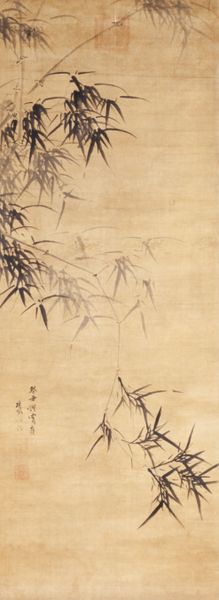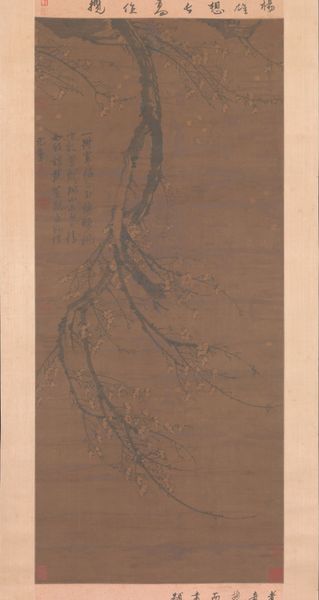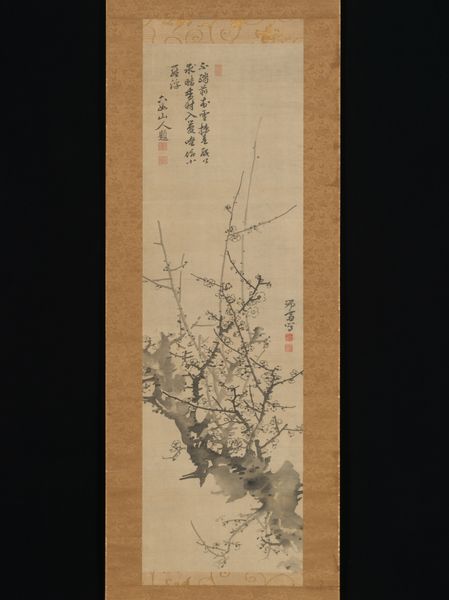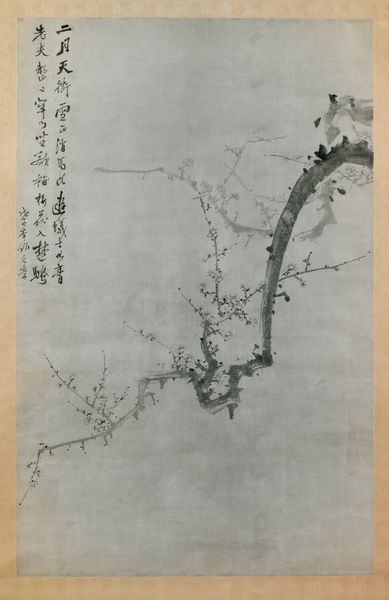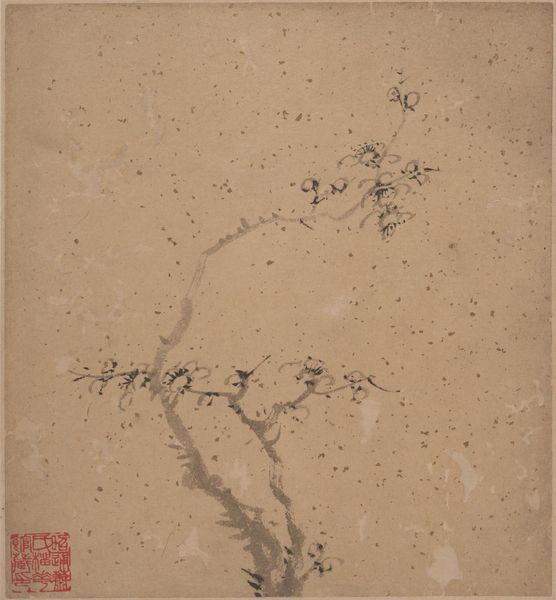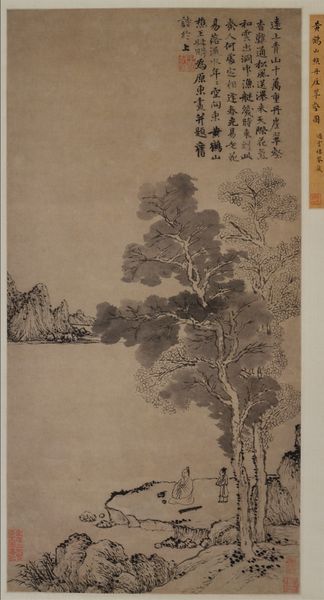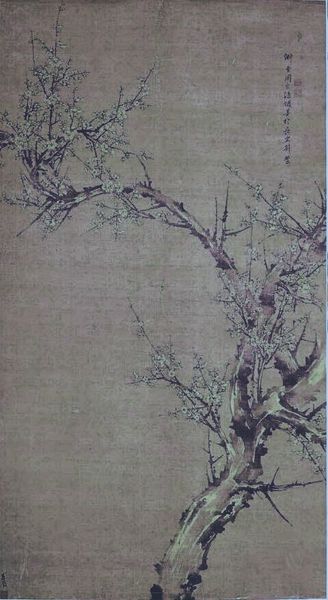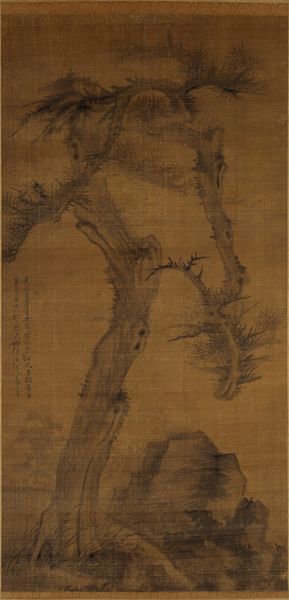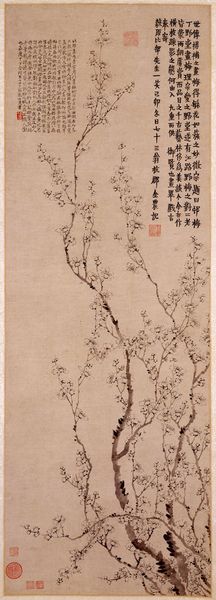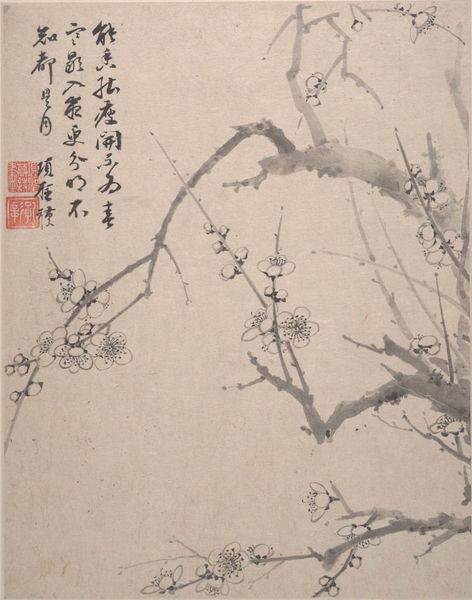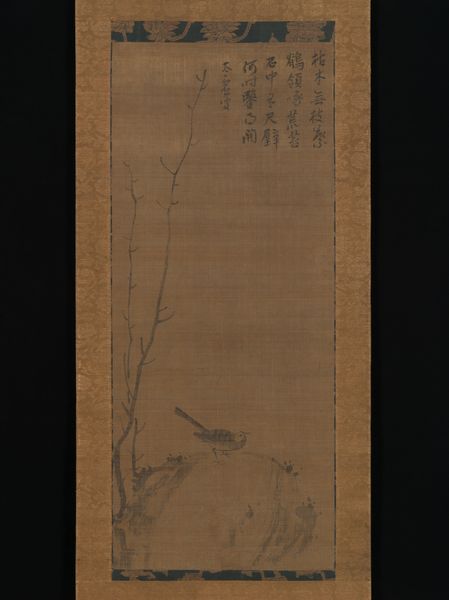
painting, paper, ink
#
ink painting
#
painting
#
asian-art
#
landscape
#
paper
#
22_ming-dynasty-1368-1644
#
ink
#
calligraphy
Dimensions: Image: 60 x 35 5/16 in. (152.4 x 89.7 cm)
Copyright: Public Domain
Editor: So, here we have Liu Shiru's "Flowering Plum in Moonlight and Snow," an ink painting on paper, created sometime in the late 16th century during the Ming Dynasty. It’s surprisingly delicate, almost ethereal, and there's so much… emptiness. What do you find most compelling about this piece? Curator: For me, it's the stark contrast between the natural world represented – the plum blossoms braving the elements – and the very deliberate means of production. The choice of ink, the specific paper, these are not accidental. They speak to a tradition steeped in ritual and the valuing of material austerity, reflective of a particular class of literati who consumed art differently than royalty, or even merchants. Editor: Right, the material itself tells a story. It feels less about capturing a realistic scene and more about conveying an idea of resilience, maybe through the materials' own ability to endure. Is the calligraphy significant? Curator: Absolutely. Think about the labor involved – the cultivation of the artist's hand through years of practice, the careful grinding of the ink. And consider who was able to engage in these activities. Was it accessible for women and working-class people? The calligraphy underscores the painting's connection to intellectual and political power. It is itself another form of meticulous labor, connecting visual art to textual understanding of the world. Editor: So, the art isn’t just the image, but the whole package, the paper, the ink, the skills, the culture that allowed for its creation? Curator: Precisely. This allows us to understand how the piece was likely understood and received by those who would have experienced the work within that society. Also how that culture differs from the way most Western art is experienced today, where the materiality may be less significant. Editor: That shifts my perception entirely. It’s not just a pretty picture, it’s a cultural artifact with layers of social meaning embedded in its materials and processes. Curator: Indeed, recognizing the relationship between the natural form, the material form, and society.
Comments
No comments
Be the first to comment and join the conversation on the ultimate creative platform.
